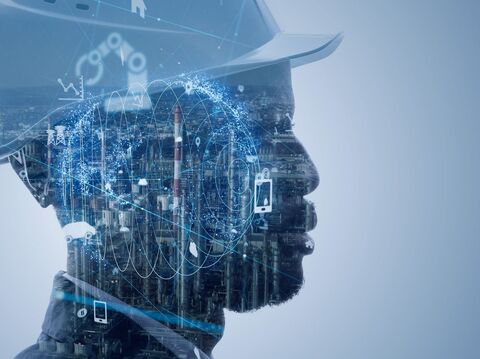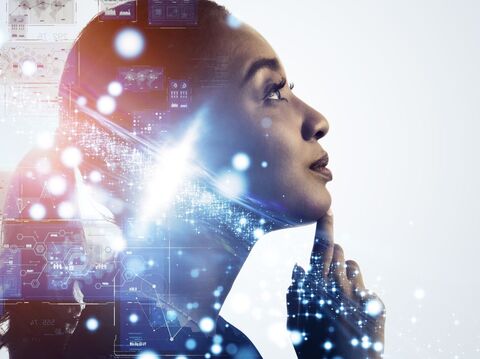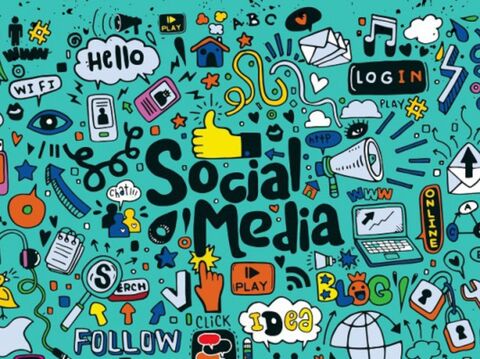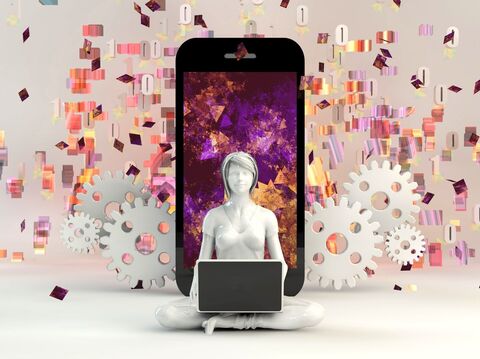Multi-Agent Systems in Artificial Intelligence with Examples
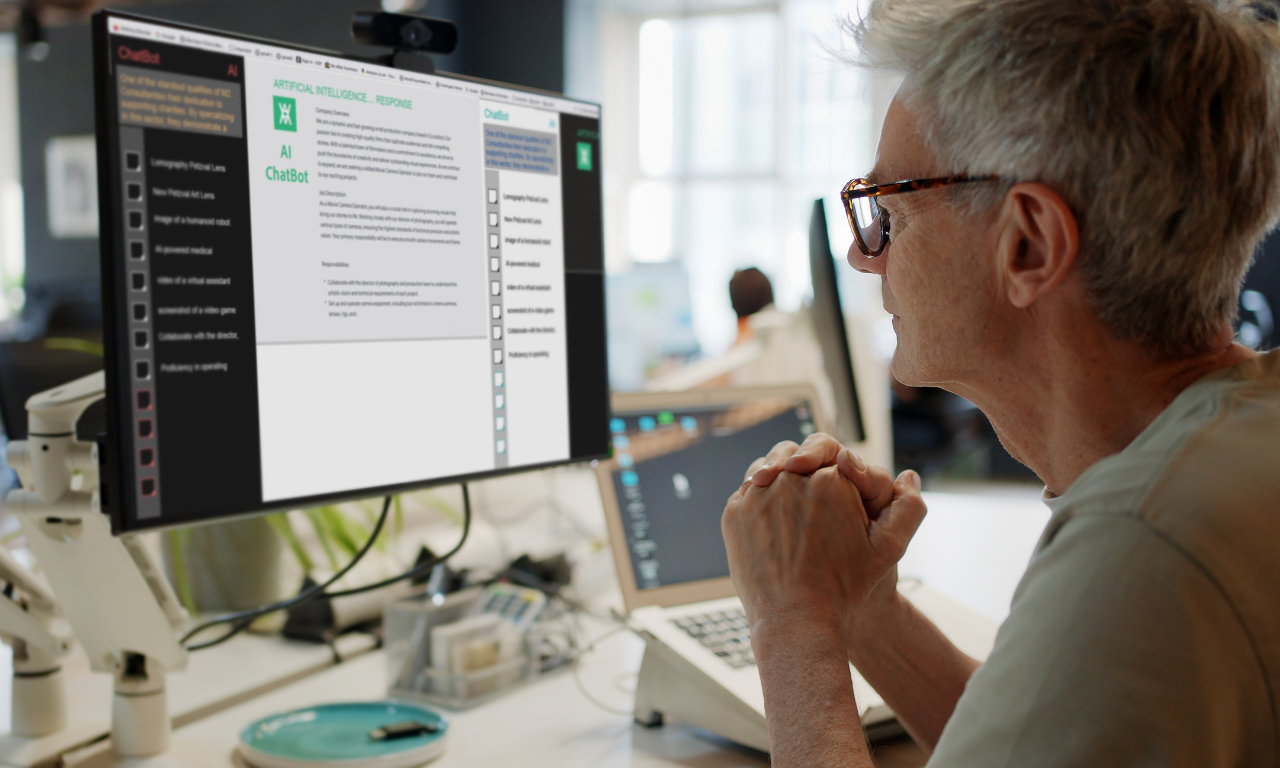
Multi-agent AI is a new era in artificial intelligence in which many smart agents work collaborate and interact with each other to solve complex issues. These bots don’t work alone, they work as a dynamic team that shares information and changes as needed in real-time.
Multi agent systems are transforming how finance, robotics, manufacturing, or automobile industry works. According to Gartner, AI agents will be able to handle 80% of common customer service problems through a robust automation system.
Multi-agent AI is a huge step forward in smart automation because it gives faster solutions and creates systems that can think, learn, and work together.
In this blog, you’ll get to know about multi-agent systems in depth, their types and how beneficial they are for businesses.
What is a Multi Agent System?
Multi agent systems combine several AI agents that work together to finish complex tasks. Each bot focuses on a specific task, like collecting data, analyzing it, or making decisions. They all work together to achieve a common goal.
Learn how individual AI agent types influence collaboration within multi-agent systems.
Using autonomous agent frameworks, these agents work on their own while still coordinating with each other. This system lets you be flexible and solve problems more quickly.
In real life, these systems are changing business software by handling tasks and making data processing faster. Decentralised AI coordination that works well makes sure that bots communicate with each other seamlessly and adjust to new settings.
These technologies enable AI to work like a team, providing smarter and more scalable options than simple automation.
Why Does the Model Context Protocol Matter?
Large language models (LLMs) have made AI copilots better, but static data has a certain limit. AI bots must work with real-time data, tools, and systems to be truly useful. This can be done with agent-based modeling, which lets AI act like real-life agents that change and adapt to new environments.
The Model Context Protocol (MCP), launched by Anthropic in 2024[1], makes this possible. MCP is an open standard that connects AI models like GPT-4, Claude Sonnet, and DeepSeek to external systems using a simple and secure interface.
MCP and agent-based modeling work together to let AI agents get to data, take steps, and support real-time workflows. This turns them into active participants in business processes rather than passive responders.
Difference between a single agent and a multi agent system
Both single and multi agent system have their own pros and cons. Many-agent AI shares jobs and solves problems together, while single-agent AI works alone. Businesses, developers, and AI experts can choose the right model if they know the main differences between these two models:
| Aspect | Multi-Agent System | Single-Agent System |
|---|---|---|
| Complexity | More complex due to the need for communication and coordination among agents. | Setting clear goals makes it easier to build and run. |
| Flexibility | Highly flexible, capable of adapting to changing environments and tasks. | Limited flexibility, best suited for well-defined, static tasks. |
| Scalability | Easily scalable by adding more agents to the system. | Limited scalability based on the capacity of the single agent. |
| Performance | Excels in complex, multi-faceted problems requiring collaboration. | Performs well in specific, focused, and narrow-scope tasks. |
| Best Use Case | Ideal for complex, dynamic, and collaborative environments or tasks. | Ideal for simple, predictable, and cost-sensitive applications. |
Working of Model Context Protocol
MCP is a client-server protocol that lets AI agents connect to external tools and data sources. How you deploy it impacts your control, speed, and security.
A remote MCP server is managed by an external provider. It helps teams integrate services quickly, use community-built connectors, and reduce setup time. This approach works well for businesses that value speed and adaptability.
A local MCP server is one that you run on your own network. Your team is in charge of the environment, makes sure safety regulations are followed, checks code, and controls who can access what. This setup works best for businesses with strict rules or sensitive data.
What they both do is use the same core technology. The key difference is how much control you need and how much risk you are willing to manage. MCP makes it easy for teams to connect AI agents to real-world processes, no matter if they want to speed up delivery or offer a tight oversight.
Types of Multi Agent System
Multi-agent Robotic systems are classified based on how the agents interact with each other, mostly through cooperation or competition:
-
Cooperative multi-agent systems
Agents use cooperative multi-agent learning to share knowledge and plan their actions as they work together toward a common goal in cooperative multi-agent systems. Swarm robotics is an example of this, in which robots collaborate efficiently.
-
Competitive multi-agent systems
In this model, the agents have different goals and are competing to win. For example, in games like StarCraft or Dota 2, each AI tries to do better than the others.
-
Hybrid multi-agent systems
These multi-agent systems blend competition and teamwork. For example, autonomous traffic management needs cars to cooperate and follow the rules while competing for road space. Here, agent communication protocols are utilised. Learn how multiagent planning techniques align strategic autonomy with coordination.
Benefits of using MCP in agentic AI
Message Control Protocol (MCP) is a key part of making sure that intelligent agents can communicate with each other properly and work as one cohesive unit.
Here are some of its benefits in agentic AI:
-
Shared language for agents: MCP gives agents a clear and common way to communicate, reducing confusion and misinterpretation.
-
Smooth coordination: MCP makes sure that all workers are on the same page, which helps them work together effectively to finish tasks and solve problems.
-
Improved collaboration: Structured messaging makes it easy for agents to share updates, plan actions, and make choices as a team.
-
Supports scalability: As more agents join the system, MCP makes sure that conversation stays quick and organised without getting too busy.
-
Improves adaptability: When surroundings change, agents can react quickly and change how they act in real-time. This is key in systems using cognitive automation for agility.
-
Reduces errors: MCP prevents miscommunication and system failures by using clear message formats and rules.
-
Creates intelligent teamwork: MCP helps a group of different agents work together as a well-coordinated, goal-oriented unit.
Multi Agent System Architecture
A multi-agent system (MAS) is a group of intelligent agents that work together to fix issues that are too complex for a single agent to handle.
This is how it works:
-
Intelligent agent architecture means each agent can sense, think, and act on its own.
-
Since the system uses decentralised AI collaboration, there isn't just one person in charge. The agents work together to make choices and share knowledge.
-
This setup supports collaborative decision-making in AI, where agents plan and act as a team.
-
MAS often follow the principles of swarm intelligence systems. In these systems, simple agents follow basic rules to act in smart groups, like birds moving together.
Why it matters:
-
MAS lets you respond faster and change things better
-
It can be changed and expanded more easily than centralised platforms
-
It mimics natural teamwork seen in human teams
Example of Multi Agent System
Multi-agent systems (MAS) have transformed different sectors from automobile to healthcare by resolving hard real-world problems. Here's how:
-
Autonomous vehicles
Intelligent agents coordinate tasks like detection, planning, and control in self-driving cars and trucks, improving safety and efficiency. Discover how multi-agent setups are already transforming industries through applied AI in business. Companies like Waymo and TuSimple are at the top of this field, making personal and business transportation safer and more efficient.
-
Smart grids
Multi-agent systems balance energy supply and demand, integrate renewables, and optimise distribution, as shown by PowerMatcher’s success in reducing peak loads[2].
-
Financial markets
In the financial markets, AI agents make trading and managing risk faster and more accurate. The LOXM AI and MAS-based market simulations at JPMorgan make it easier to study trade and regulations.
-
Healthcare
MAS improve the scheduling and use of hospital resources. By looking at a lot of complicated medical data, intelligent bots like IBM Watson help make treatments more personalised.
For deeper examples, explore more AI case studies transforming enterprises.
Advantages of Multi Agent System
Multi agent systems allow many smart agents, each with its own task, to work together without any problems. There are a lot of great things about this setup that make it perfect for environments that are complicated and change over time.
- Easy to scale and modify
It won't change the other agents when you add, remove, or update one. This means that the system can easily grow and change to meet new needs.
- Fault tolerance
If one agent fails, others continue without interruption. This fault-tolerant design makes sure that the system works the same way even if some of its parts break.
- Independent decision-making
Each agent can think and act on its own, without having to wait for instructions from the center. This independence makes things faster, more flexible, and more efficient overall.
- Smart collaboration
Agents can share what they know while specialising in different tasks. This leads to faster problem-solving and more innovative outcomes through collaborative intelligence.
- Transparency and interpretability
Every action in the system can be traced back to the agent responsible. This makes things clearer and makes it easier to keep an eye on things, troubleshoot, and improve speed.
Challenges of Multi Agent System
Multi-agent systems have a lot of great benefits, but they also come with some complexities. You need to understand these problems to make systems that are strong, safe, and effective.
- Coordination Isn’t Easy
It's not easy to get multiple agents to work in sync. Without advanced coordination mechanisms, agents can act unpredictably. This can make the system less effective or even cause it to fail.
- Conflicts Between Agents
Every agent acts independently, which can lead to clashes. If there aren't clear rules for how to handle conflicts, agents with different goals or behaviours may get in each other's way.
- Heavy Resource Requirements
As more agents are added, it takes more computing power, memory, and network space. Also, it's hard to make programs that work well even as the system gets bigger.
- Security Risks
Each agent adds a new entry point for cyber threats. A single vulnerable agent can compromise system integrity or leak sensitive information.
Conclusion
Multi-agent systems are rapidly becoming the foundation for building smart, collaborative AI. As this approach evolves into the new standard, understanding how these systems work is becoming a critical skill—whether you're developing autonomous agents or designing environments where they interact intelligently.
At GrowthJockey, we act as both a startup incubator and a provider of Enterprise AI Solutions, helping you build scalable multi-agent systems from the ground up. From designing agent frameworks to orchestrating seamless communication and coordination, our platform supports every stage of your AI development journey.
Multi Agent System FAQs
What is a multi-agent system?
A multi-agent system (MAS) is a setup where several individual AI agents connect or work together in an environment. There are different roles, goals, and ways for each agent to make decisions. Depending on how the system is set up, they can cooperate, compete, or do both.
What is an example of a multi-agent?
A common example is automated traffic management, where multiple self-driving cars (agents) interact and cooperate to optimise traffic flow and avoid accidents.
What are multiple agents?
Multiple agents are just two or more smart computer programs or systems that can sense and make decisions on their own.
What is the multi-agent LLM system?
A multi-agent LLM system has several large language models (LLMs) that work together to complete difficult tasks. One LLM might write the content, while another checks the facts or makes the tone better. They all work together to make the final product better.



